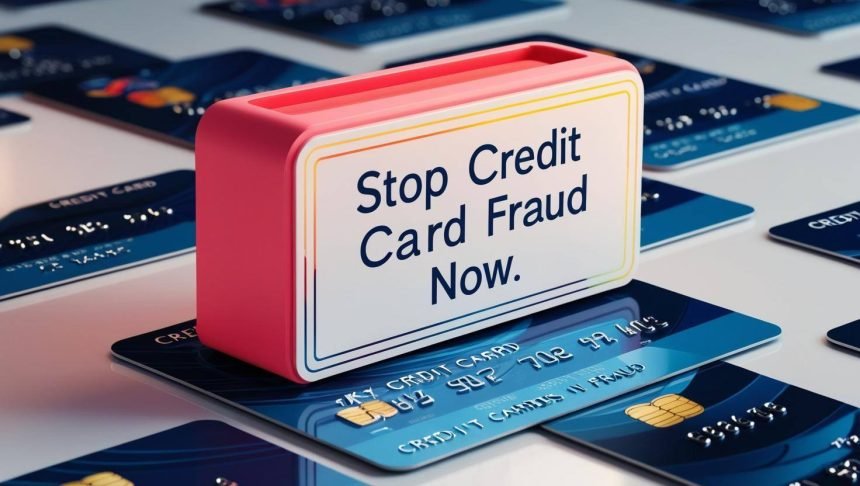Fraudulent activities involving credit cards cost billions of dollars every year, which is a major threat to financial security.
The tricks that fraudsters use change as technology does, so it’s important for people to be cautious.
We’ll talk about ways to keep your financial information safe by mixing the information from two in-depth articles on credit card safety.
This will give you peace of mind and a safe financial future.
Understand Credit Card Fraud: The Growing Challenge
According to Nilson Report, credit card fraud cost the world an amazing $33 billion in 2022, and it’s expected to hit $38.5 billion by 2027. This problem is getting worse, which not only costs money but also makes people less likely to trust banks.
When victims find out about the theft and have to deal with the consequences, they often go through mental pain and trouble.
But if you are cautious and well-informed, you can avoid these problems and keep your hard-earned money safe.
1. Setting Up Real-Time Alerts: Immediate Fraud Detection
Setting up real-time transaction alerts is one of the easiest and most effective ways to stop credit card scams.
There are a lot of credit card companies that give push notifications or SMS alerts for every transaction. These alerts let you know right away when someone is doing something without your permission.
For instance, some service providers let you set up alerts that only let you know about certain types of transactions, like online sales.
This keeps you updated and cuts down on distractions that aren’t necessary. You can lessen the damage to your earnings from fraud if you catch it early.
2. Leveraging Secure Payment Methods
Tap-to-Pay Technology
Not only is it easier to use tap-to-pay or mobile payment methods than swiping cards, they are also much safer.
Point-of-sale (POS) systems are often hacked by thieves who want to steal credit card information during swipe purchases.
With tap-to-pay technology, on the other hand, your card information is encrypted, which makes it very hard for hackers to get to.
Virtual Credit Card Numbers
Using fake credit card numbers to shop online is another more complicated option. These one-time-use numbers keep your real credit card information safe.
The virtual number is useless after the transaction, even if someone steals it. This is especially helpful when buying things or subscribing to services on websites that aren’t very trustworthy.
3. Two-Factor Authentication: An Added Layer of Security
Two-factor authentication (2FA) is one of the most important ways to stop internet fraud. Users have to confirm purchases with an extra code that is sent to their email or phone.
Criminals can’t use your card number to make purchases without this proof, even if they get their hands on it.
This feature is often offered by financial institutions for internet shopping and account logins.
Even though it might be a bother, the extra step is worth it for the better security.
4. Safeguard Login Details and Avoid Phishing Scams
Keep Your Credentials Private
Your credit card PIN, online banking passwords, and mobile app login information are all private and should never be given to anyone else, not even someone you trust.
Fraudsters often use personal connections or send convincing emails to get this information.
Recognize and Avoid Phishing Attempts
Phishing scams look like real emails or texts from banks or businesses in order to get private information.
Fraudsters send emails, calls, or texts that look like they are real, often with logos and designs of well-known brands.
Keep in mind that banks will never ask for private information like card numbers or CVVs through these methods. Be careful and check messages that seem fishy twice.
5. Minimize Exposure to Skimming and Public Wi-Fi Risks
Spot and Avoid Skimming Devices
Skimming is the act of stealing credit card information from POS devices that are used for legal transactions.
To keep this from happening, keep your card visible at all times and check the reader for any problems.
Modern EMV chip cards offer more defense against skimming, but you still need to be careful.
Avoid Public Wi-Fi for Financial Transactions
Hackers can get to your information if you use public Wi-Fi to do things like banking or shopping. If you need to get into private accounts while you’re out and about, use a VPN or your phone’s data to stay safe.
6. Smart Card Usage Practices
Separate Cards for Specific Purposes
If you only use one card for autopay subscriptions, like for streaming services or energy bills, fraud is less likely to affect other parts of your finances. To keep your financial information safe, use a different card for daily purchases.
Limit Payment Thresholds
Credit card companies usually let users set daily limits on how much they can use their cards for things like ATM transfers, online purchases, and contactless payments. By lowering these limits, the damage will be very small if scam does happen.
7. Utilize Mobile Wallets for Enhanced Security
Because they use tokenization, mobile apps like Apple Pay and Google Pay add an extra layer of security.
During transactions, this technology replaces your card information with a unique token. This keeps retailers from seeing your real card information.
When used with fingerprints or passwords that are unique to each device, mobile wallets are a safe option to physical cards.
8. Stay Wary of Scams and Urgent Payment Requests
Scammers often get people to pay right away by threatening bad things will happen or offering big rewards.
Some examples are fake tax notices, fake prize wins, or fake inheritance scams.
Always take the time to make sure that such claims are true before giving out personal information or sending money.
9. Monitoring and Maintaining Your Credit Health
To catch unauthorized charges early, you need to keep an eye on your credit card activities and statements on a regular basis.
A lot of banks offer free tools that keep an eye on your credit and let you know if anything seems fishy.
Not only does using these tools stop scams, but it also helps you keep your credit score high.
10. Proactive Measures for Financial Peace of Mind
In addition to the tips above, it is very important to keep up with how theft is changing.
You can stay up to date on the latest threats and how to protect yourself by signing up for emails or blogs from your bank or other trusted financial sources.
Also, reporting fraud right away makes sure that you’re covered by policies with no responsibility. If you act quickly, you can avoid the trouble of long-lasting arguments or financial losses.





